The content of the article
Otherwise, an ordinary fox is called red because of the specific pigmentation of its fur, which, by the way, is very much appreciated. By this animal is meant a predatory mammal, which belongs to the dog family. This is the largest representative of the family among themselves. She is adapted to live in harsh conditions, to obtain food. Some people even train such foxes from an early age. But let's not get ahead of ourselves, we will study all aspects in order.
Description
- Predatory mammal is common in different climatic regions, but it likes moderate or severe weather conditions. The animal is ranked as a dog family, it is the largest representative of all available foxes. Individuals are valued for their thick fur, they are also infused by farmers to kill rodents and insects.According to external data, representatives of the species are similar to themselves, they have an elongated muzzle of a narrowed format. The body is elegant and elongated, the limbs are short.
- Dimensional characteristics depend on the gender of a particular individual. As a rule, along the length of these mammals grow to 80-90 cm with a mass of 6-10 kg. All representatives of the family have a characteristic similarity - the body is elongated, the paws are shortened, the muzzle is elongated, and the tail is fluffy. The tail is required for balancing during brisk walking or jogging. It also serves the fox as a weather shield. The length of the tail is extended to 40-50 cm.
- The represented individuals do not count on their vision, they are guided by smell and touch. Also, animals are characterized by excellent hearing, large-format ears, slightly elongated, pointed tip. There are certain types of foxes, whose ears are equal to a length of 15 cm. At night, mammals see normally, but do not recognize the color scheme. They also catch sharp movements. As for the oral cavity, it is equipped with 42 teeth.
- Now about the fur. Wool cover in length and density depends on the season and climate.If the fox lives in the cold, respectively, its fur will be long and very dense. In the summer, animals shed some of their fur, becoming less fluffy. According to the shade, the representatives of the species are yellowish, red with white, brown-yellow, beige-red. Almost all individuals are characterized by marks of whitish or black tone. Animals from northern latitudes are lightened in their pigmentation, while southern individuals are dull and not too large.
- Foxes run fast, in case of an attack or a hunt they can reach speeds of 50 kilometers per hour. When the mating season begins, the represented individuals make strange sounds similar to dog barking. As for life expectancy, individuals in their natural environment reach 3–9 years. While in captivity can live quite 15 or even 20 years.
Lifestyle
- The discussed mammals prefer to dig mink independently on a dedicated area. The territory is occupied by a family or a couple that has reached puberty. The ability to drive oneself away from one's home provides foxes with food.Some families do not dig minks, but occupy empty houses. They can live in the former home of badgers, foxes, woodchucks, etc.
- Cases have been recorded in which these foxes coexisted in burrows next to badgers. And conflicts did not arise. Individuals divided the home and raised offspring. Representatives of the species like to live among the hills or ravines, which are half sandy terrain. The soil must be protected from rain.
- There are several entrances and exits in the mink, so that in case of flooding the family can safely leave the dwelling. The tunnels are long and smooth, there is a separate large area for nesting (the camera). In her foxes sleep and guard the offspring. Individuals that could not find or dig a hole, search for hollows in trees or crevices among the rocks and equip them under their own way.
- Interestingly, permanent shelters are used by these animals only for the time they are raised. In the remaining time, animals prefer to live in an open area, building themselves housing in the snow or in the grass.
- These individuals move smoothly and straight, which can be seen from the tracks in the snow.When the fox is frightened, it bends the body to the ground, completely spreads the tail and quickly jogs. Activity is manifested to a greater extent at night, during the day foxes can sleep. In daylight these individuals do not see well; in the evening there are no such problems.
Habitat
- Individuals of the species under discussion are distributed in different parts of our vast country. They do not inhabit, perhaps, the tundra and the zone of the Polar basin, foxes dominate here. A distinctive feature is that these predators quickly adapt to the climate and its changes. Partly for this reason, they are met in different landscapes, be it a mountainous area, a lowland, a steppe, or a vacant lot.
- However, it is important that the habitat area is provided with food and shelter. Foxes live near water sources, which are lakes or rivers. They are suitable for the southern and central parts of Russia, since these regions have the best landscapes and weather conditions for these animals.
- In the cold season, predatory mammals try to spend most of their time in shelters in the form of holes.At the same time, when breeding begins, they go deep into the forest so that no one will disturb the subsequent offspring.
Nutrition
- Foxes are classified as predators, but their daily diet is not limited to animal food. The feed base includes more than 30 varieties of plant crops and about 400 species of animals. Most of the menus are rodents of small type. When the winter season comes, the foxes hunt voles.
- Individuals of this breed group very skillfully drive rodents into a trap, after which they feast on prey. They search for a victim under the snow mass, then dive and begin to jump intensely, confusing it. Hunting is accompanied by rapid movements of the paws, the rodent literally jumps out of the snow and immediately becomes caught.
- Foxes rarely hunt large mammals, but still do not exclude the possibility of eating them. In the course of the offspring is roe deer and hares. Animals also hunt birds and their cubs. Some foxes feed on dead elks and their offspring, others attack reptiles. It all depends on the food supply available in the distribution area.
- In the summertime, these predators include insects in their basic ration and also absorb their larvae. When hunger times come, some foxes eat carrion. From plant foods they like to eat vegetative parts of plants, berries with fruits.
The enemies
- Presented mammals have enemies in their natural environment, but the final list of enemies depends on where the fox lives. Foxes can be hunted exclusively by those predators that are larger than her in size, strength and speed.
- These include lynx, bears, wolverines. Even some large birds can afford to catch fluffy prey. Among predator birds, eagles, hawks, golden eagles, falcons, etc. are distinguished.
- Some part of the steppe animals may be dangerous for the foxes, in particular, there is a threat to the cubs. Badgers, ferrets and ermines can carry off and feed offspring.
Breeding
- Most often, in the individuals under consideration, the mating season falls in the middle or end of winter. It is noteworthy that up to 6 males can chase after one female at such a time. At the same time, they constantly fight among themselves and yelp.
- After mating, the female proceeds to thoroughly clean the burrow. After harvesting the fox settles down and awaits the appearance of offspring. She almost never leaves home. All this time, the male gets food, protects the family and feeds the female. It leaves prey near the entrance to the burrow.
- Soon the babies are born. They are helpless and covered with wool. The cubs are blind and deaf. From the first days of life foxes have a white tip of the tail. In addition, the offspring begins to grow and develop rapidly. After about 3 weeks, babies are starting to hear and see.
- Around the same time, their teeth erupt. After some time, they sometimes start to leave the hole. Foxes gradually try adult food. Surprisingly, the offspring all this time, fed and raised by both parents.
- The female continues to feed offspring with milk for about 1.5 months. Then the kids gradually get used to adulthood and sometimes begin to hunt. They become independent not earlier than half a year.
- Young animals reach sexual maturity at about the age of 1.5-2 years. This applies to males. Females, on the other hand, mature a year or two later. Only after that they are ready to become parents.
Population
- Just a few years ago, hunters exterminated the animals in question in large numbers. Sometimes this was done to prevent the development of fox rabies. Similar natural foci previously occurred quite often.
- But in recent years, experts have developed a vaccine. Now it is enough to enter orally. As a result, the need to kill animals in large numbers has disappeared by itself. However, the population of this type remains rather unstable.
- Despite all this, the number of such wild animals remains on the mark that they do not need to be entered into the Red Book and attributed to conservation status.
Home maintenance
- Immediately it should be said that the content of the fox in the apartment or house is quite possible. Consider, while you need to carefully prepare and follow a number of certain rules. Before you start such a pet, first of all, be sure to find a veterinarian.
- The specialist should regularly monitor the health of the animal. This is perhaps the most important and basic rule. Next is to get a big cage.However, it should be so spacious that the pet could build a mink. Try to equip the cage so that cleaning it does not cause trouble.
- Do not forget about the drinker. Be sure to pour fresh filtered water every day. We can not allow the fox suffered from thirst. If you live in a private house with sufficient territory, it is best to build an aviary and install a booth in it. Be sure to deepen the net into the ground by about 1 m. Otherwise, the fox can dig a hole and run away.
- Consider, such an animal requires constant attention. With a fox, you need to constantly play and train. Such individuals are strongly attached to the owners, because they are quite easy to teach various tricks. However, about aggressive games should be forgotten. Otherwise, the pet can go over the edge and it hurts to bite you or scratch it.
- With a fox you need to play like a cat, not a dog. It is worth knowing about one more characteristic feature of the individuals in question. The problem is that foxes emit a rather unpleasant and strong flavor in the warm season. Therefore, at this time, the animal is recommended to bathe every 2 weeks.
Feeding at home
- With regard to nutrition, then the fox is by and large unpretentious. They will be happy to eat dog food without any problems. However, such products must be premium and super premium class. The rest of the animal regularly give chicken, fish, beef, vegetables, berries and fruits.
- Consider, before giving such products to an animal, it is recommended to boil them beforehand. Be sure to remove all bones from the fish. In addition, foxes eat cottage cheese, milk and soft cheese quite well. However, such delicacies are allowed to give a maximum of 2 times a week. One portion should not exceed 150 grams.
- Sometimes it is recommended to pamper the forest with live food. Get a rat or a mouse from a specialist store. However, keep in mind, if the animal tries such food, it can completely refuse from the usual diet. Therefore, it is up to you to decide whether to give live food or not.
Fur value
- As for molting, then in the individuals under consideration it begins around the end of winter or early spring. This process ends in the middle of summer.After that, the same winter fur begins to grow intensively in animals. It is fully formed by the middle of winter.
- Summer fur is different in that it is short and not very thick. Winter wool on the contrary, fluffy and knocked down. In this case, fox fur can be a different color. Most often it is a red fox or black-brown. Such fur is very appreciated all over the world, especially by large fur auctions.
Interesting Facts
- In ancient times, the skins of the animals in question were greatly appreciated. It meant that a person is very rich and wealthy.
- Do not forget that such animals are very clever and clever. They are able to outwit hunting dogs that chase them.
- Sometimes foxes are called "Patrikeevna". This nickname came from Prince Patrikey. Such a ruler became famous for his cunning. He dodged the trade.
- In different countries around the world, the fox is found in literature and folklore. It is in such works that animals are represented by a symbol of cunning. In Japan, the fox is considered a werewolf.
- It is noteworthy that the individuals in question have perfect hearing. They are able to hear the squeal of a field mouse at a distance of about 100 m.
- When the fox catches the prey, it crumbles it into small pieces. She swallows meat without chewing.
- There is such an animal as a gravel wolf. He is very similar to the fox, but does not belong to this genus. He does not have a vertical pupil, which is characteristic of foxes.
In today's article we have studied the representative of the canine family, which is otherwise called the red fox. It is distributed mostly in cold climatic zones, has enemies in its natural habitat, and feeds on not only animal but also plant food. Of particular value is the fur of the animal, because of which poachers constantly lead fox hunting.
Video: Fox (Vulpes vulpes)

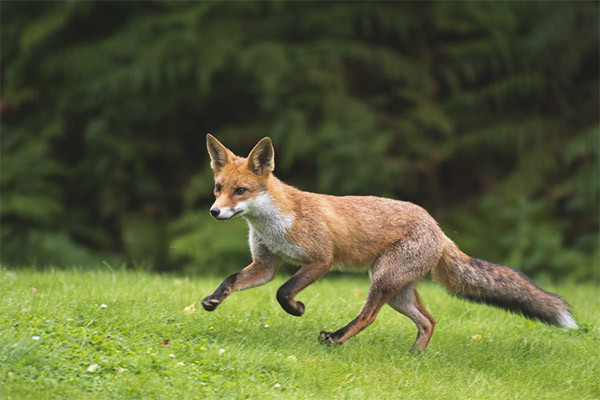
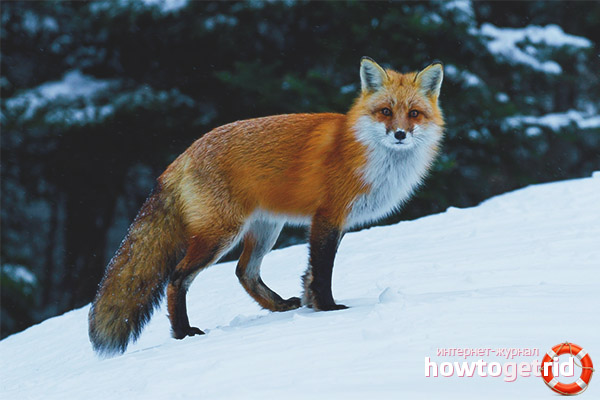
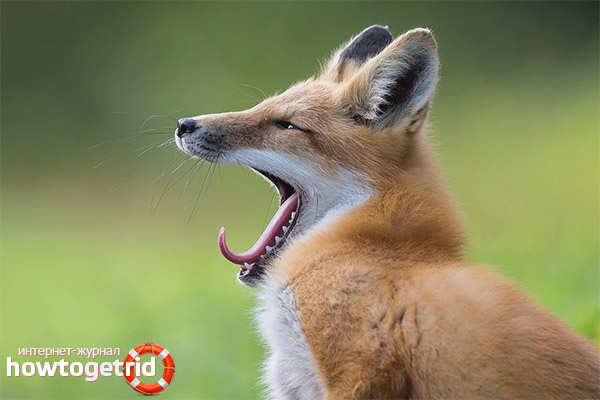
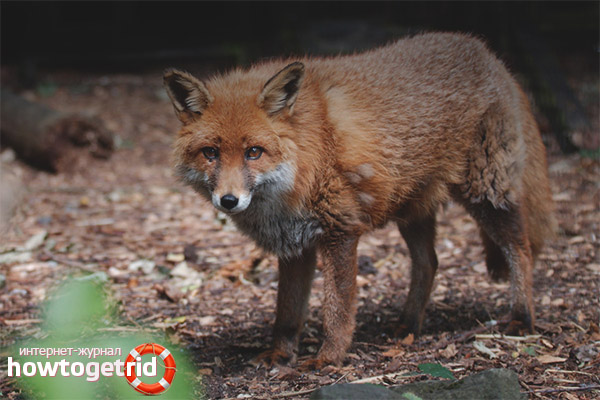
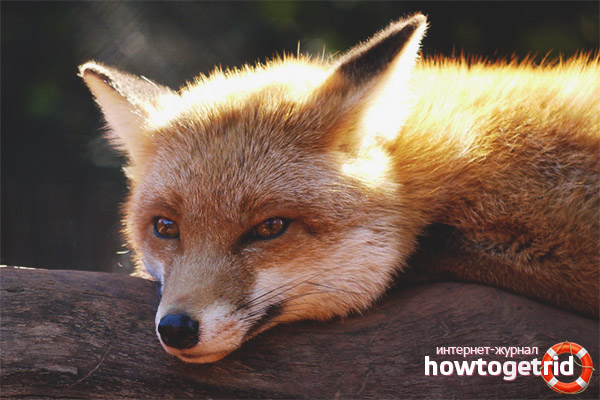
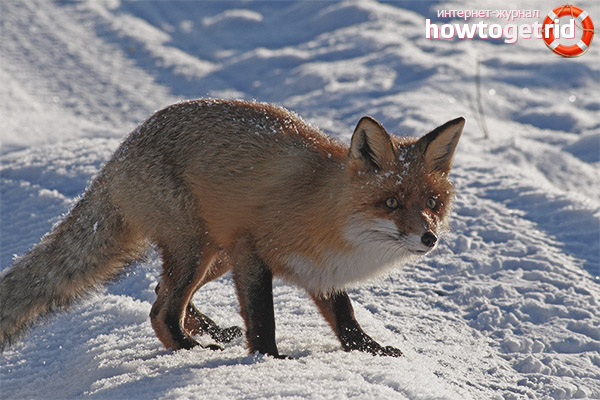









To send